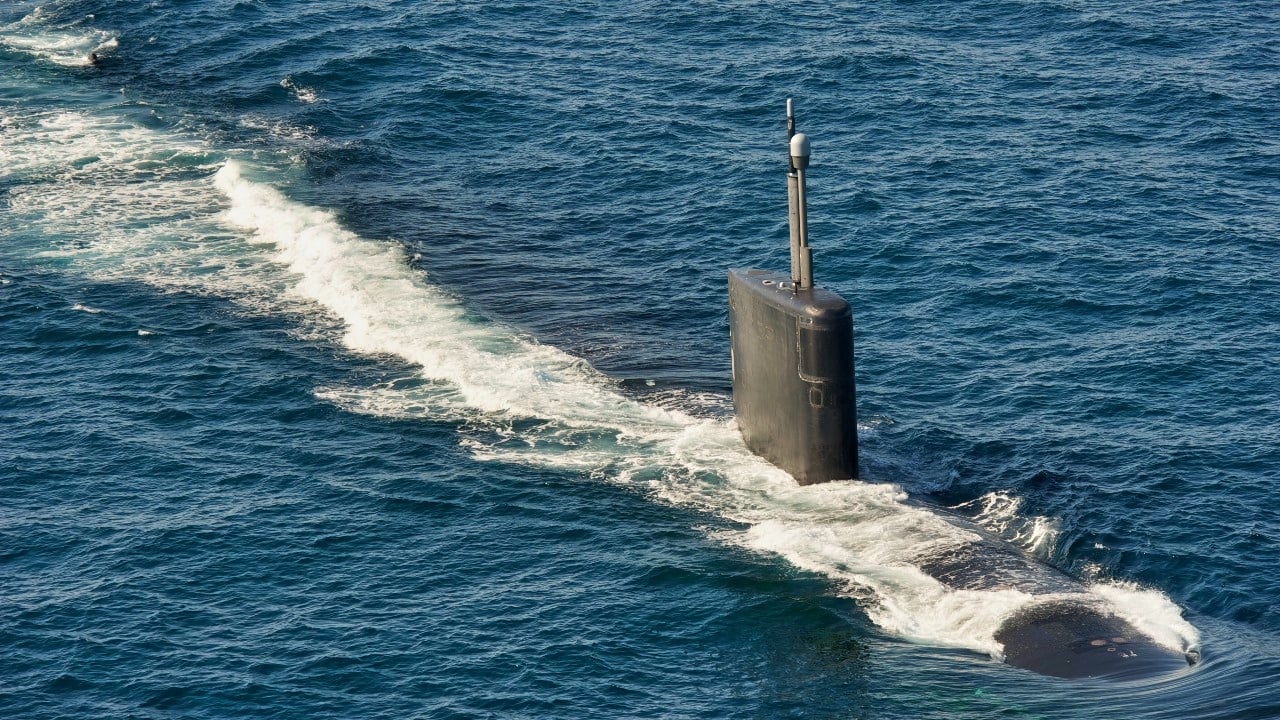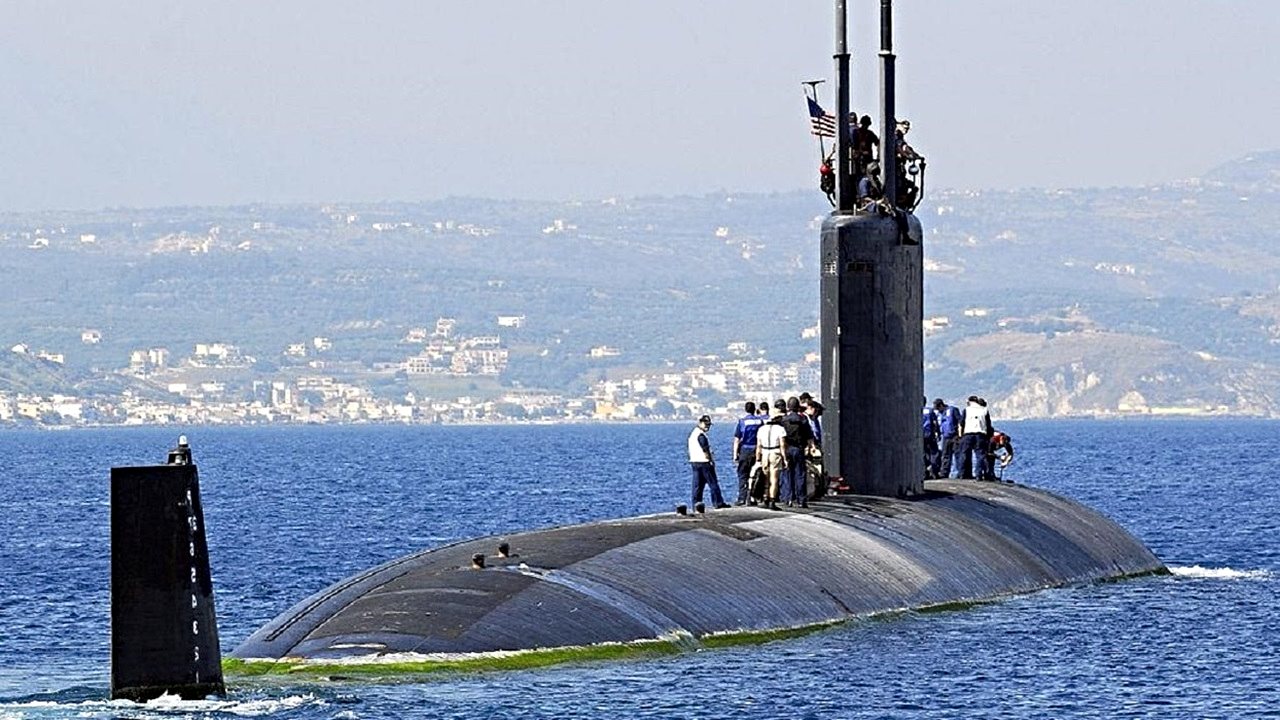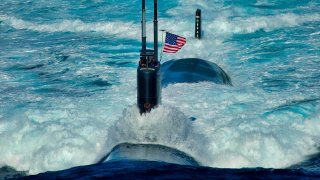688i Improved Los Angeles-class Submarines Freak Russia Out
The 688i Improved Los Angeles-class submarines, introduced in the late Cold War, remain essential to the U.S. Navy. Building on the original Los Angeles-class, these submarines incorporate quieter operation, improved sensors, and electronic upgrades.
What You Need to Know: The 688i Improved Los Angeles-class submarines, introduced in the late Cold War, remain essential to the U.S. Navy. Building on the original Los Angeles-class, these submarines incorporate quieter operation, improved sensors, and electronic upgrades.
-Featuring 12 vertical launch systems for Tomahawk missiles and advanced sonar capabilities, they support a range of missions, from reconnaissance and intelligence gathering to special operations, such as SEAL delivery.
-Known for their low acoustic signature, the 688i submarines can closely approach enemy targets, maintaining strategic advantages in intelligence, stealth, and firepower. Despite newer submarine classes, these vessels continue to be vital Navy assets.
688i Improved Los Angeles-Class Attack Submarine, Explained
The Los Angeles-class submarines remain the backbone of the U.S. Navy’s submarine force despite newer Seawolf-class and Virginia-Class vessels joining the fleet over the last several decades.
Initially designed during the Cold War to counter the Soviet Union’s advances in submarine technology, the Los Angeles ships were equipped with improved sound quieting and a larger propulsion plant than its predecessors.
These advanced submarines could operate in various missions, including undersea warfare, surface warfare, mining operations, special forces delivery, reconnaissance, and carrier battle group support and escort.
Following the original Los Angeles-class’ introduction to service, a succeeding variant featuring even more sophisticated capabilities later followed. In fact, the last 23 Los Angeles ships were built as part of the 688i improvement program
During the Cold War, submarines were involved in spy operations straight out of James Bond films. From tapping undersea telephone cables next to Soviet bases to a litany of other covert missions, these underwater vessels were the driving force of the Cold War. While today’s Los Angeles submarines may not be carrying out quite as outlandish acts, the 688Is are well suited for intelligence, surveillance and reconnaissance missions - and fighting the Soviet Navy in a war.
An overview of the Los Angeles-class
In the 1960s, Soviet fast-attack submarines had developed the capability to reach top speeds sufficient to keep up with U.S. aircraft carriers. At the same time, new Soviet missile submarines were being constructed with the ability to overwhelm U.S. missile defenses. '
The development of the Los Angeles-class in 1967 was the Navy’s solution to this mounting issue. By the early 1970’s, the lead boat of the class SSN-688 Los Angeles was officially laid down. These submarines were derived from the older Sturgeon-class ships, although the Los Angeles boats were 50% larger and were equipped with a litany of critical improvements in stealth technology and speed.
These attributes enabled the submarines to maintain the pace of U.S. aircraft carriers and Soviet fast-attack submarines alike.
Introducing the 688i Los Angeles-Class SSNs
A total of 62 Los Angeles-class SNNs have been constructed and they are divided into subclasses designated as “Flights.” The SSNs 688- 718 are in Flight I, SSNs 719-750 in Flight II, and SSNs 751-773 in Flight III.
The USS San Juan was the first 688i improved submarine to enter service with the Navy in 1988. Electric Boat Division of General Dynamics in Groton, CT was selected to build the San Juan where she was officially launched in 1986. The San Jaun was later followed by the Pasadena, Albany, Topeka, Miami, Scranton, Alexandria, Asheville, Jefferson City, Annapolis, Spingfield, Columbus, Sante Fe, Boise, Montpelier, Charlotte, Hampton, Hartford, Toledo, Tucson, Columbia, Greeneville and Cheyenne.

What sets the 688i submarines apart from their sister ships?
As part of the 688i improvement program, these ships were constructed to sail even more quietly than their sister submarines. Additionally, they featured enhanced electronics, noise-reduction technology and sensors. Unlike earlier vessels in the class, the 688i submarines had their diving planes placed at the bow rather than on the sail. The initial Los Angeles-class submarines were able to carry roughly 25 torpedo tube-launched weapons, in addition to Mark 67 and Mark 60 CAPTOR mines, Tomahawk cruise missiles and Harpoon missiles.
The 688i Los Angeles ships uniquely possess 12 vertical launching system tubes for launching Tomahawks. As detailed by Military Today: “Current versions of the missile are the TLAM-C version, which can carry a single 454 kg warhead and the TLAM-D which carries a submunition payload to 900 km.
A 318 kg shaped-charge warhead can also replace the standard unitary high explosive warhead. To overcome the problem of limited weapons stowage, all boats from the USS Providence (SSN-719) onward are fitted with a vertical launch system in which the launch tubes for the TLAMs are placed outside the pressure hull behind the sonar array. Although the Tomahawk is nuclear-capable, such weapons are not now deployed on a routine basis.”
In terms of sensor systems, the 688i also possesses enhanced capabilities. The newer subclass was originally fitted with the AN/BSY-1 SUBACS submarine advanced combat system that used an AN/BQQ-5E sensor system. Ultimately, the AN/BQQ-5E system was replaced by the AN/BQQ-10, a four-phase program able to transform existing submarine sonar systems to more advanced setups.

Covert operations for the 688i:
The 668i submarines’ quiet signature enables them to approach close to enemy warships and shorelines, where they are capable of intercepting communications and obtaining footage of various targets. Furthermore, these ships are capable of equipping a SEAL Delivery Vehicle.
This manned swimmer submersible allows the U.S. Navy SEALs to more easily access denied areas covertly.
About the Author: Maya Carlin
Maya Carlin, National Security Writer with The National Interest, is an analyst with the Center for Security Policy and a former Anna Sobol Levy Fellow at IDC Herzliya in Israel. She has by-lines in many publications, including The National Interest, Jerusalem Post, and Times of Israel. You can follow her on Twitter: @MayaCarlin.
All images are Creative Commons.


